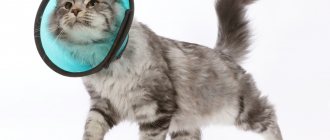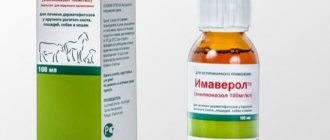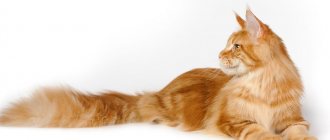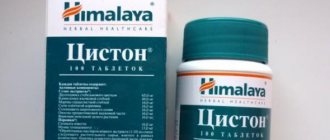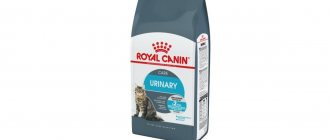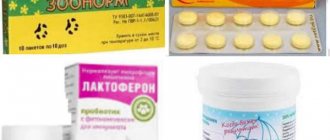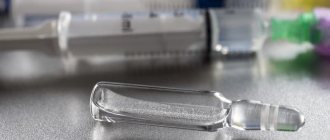How to use chlorhexidine gluconate in cats?
Oral irrigation with chlorhexidine solution for cats
Usually carried out twice a day or as directed by a veterinarian.
You should not give chlorhexidine solution to cats and do not mix it with other substances. After using chlorhexidine, wait at least 30 minutes before rinsing your mouth with water or mouthwash, brushing your teeth, eating, or drinking.
The dosage depends on your medical condition and response to treatment.
Use this medication regularly to get the most benefit from it. To help you remember, use it at the same time every day. It may take up to 6 weeks to see the full benefits of using this medication.
Tell your veterinarian if your condition persists or worsens.
What to replace it with?
If your pet is hypersensitive to chlorhexidine or is unable to use shampoo, you can use other means:
- Shampoos with benzoyl peroxide are no less effective for the treatment and prevention of skin infectious diseases in pets. The method of application is identical.
- If your pet has a wound, it is not necessary to treat the animal completely to prevent or treat bacterial infection. For focal treatment of wounds and cuts, aqueous solutions of chlorhexidine (0.05 to 7%) are used. Such solutions are sold in spray form.
Spray and shampoo 4% chlorhexidine gluconate
Davis Chlorhexidine Spray with 4% Chlorhexidine Gluconate
Helps quickly get rid of mild to severe irritations caused by microorganisms and bacteria. This soothing formula can be used for skin allergies, folliculitis, insect bites and itchy flea dermatitis. It will help cool inflamed skin and promote healthy fur growth. Davis Chlorhexidine Spray is effective but gentle and can be used on dogs, cats, puppies, kittens, horses and foals.
Indications
Shampoo with 4 percent chlorhexidine is used to wash skin prone to infections or for therapeutic and prophylactic purposes..
- as normal care for cats and cats, to cleanse and nourish the skin and coat;
- as a remedy against dermatitis caused by bacteria, especially pyodermatitis;
- for the treatment of fungal diseases (malassezia and dermatophytosis);
- to improve the functioning of the sebaceous glands;
- for the treatment of scratches and wounds;
- to get rid of parasites in cats (in combination with other means);
- against atopic dermatitis.
© shutterstock
Washing with such a preparation allows you to combine the procedure of cleaning your pet with the treatment of minor injuries and scratches, especially if the pet’s skin is prone to irritation, the appearance of ulcers and boils.
As a rule, the composition includes additional components that soothe inflammation and itching, soften, and give the cat’s coat shine, softness and a pleasant smell. Often, extracts of medicinal herbs, vitamins and microelements, or surfactants such as cocoamphodiacetate for foam are added to such washing products.
Instructions for use of chlorhexidine spray in cats
Spray directly onto affected areas two or three times daily or as directed by your veterinarian. Do not allow the drug to get into your eyes or nose. For best results and extra residual activity, use in combination with shampoo.
If the condition does not improve, contact your veterinarian. Not for use on ear flaps.
Ingredients: chlorhexidine gluconate, phospholipid complex, PCMX, SDA 40, polyoxyethylene sorbitan monolaurate, purified water
How to use
Before washing your pet, you should comb it to remove dead skin particles and fallen hairs. Next, wash as usual, wet the cat evenly and apply shampoo at the rate of 1 ml per 1 kg of weight, distribute evenly over the body and rub gently until foam appears.
You need to wash your cat with chlorhexidine shampoo carefully and make sure that the animal does not lick the foam, and especially avoid getting it in the mouth, ears and eyes. It is best to hold the foam on the cat’s body for at least five minutes to enhance the antibacterial effect, then rinse it off, remove excess moisture with a towel, and dry the pet and comb it again. Be careful, while the animal's fur is wet, it can easily catch a cold.
If the shampoo is used for medicinal purposes, then such washing must be repeated every 3-5 days, depending on the disease, the course of treatment is usually from ten days to three weeks.
If you use the drug for preventive purposes, you can wash your cat once a month.
The shampoo can be used in combination with other medications, but it is highly advisable to consult with your doctor before use.
Chlorhexidine gluconate for oral irrigation in cats
Chlorhexidine gluconate is the most effective antiplaque agent currently approved.
- Chlorhexidine is a broad-spectrum antiseptic that is bactericidal and effective against some yeasts and viruses.
- The effectiveness of chlorhexidine has been shown in many controlled clinical studies, showing a 50-60% reduction in plaque and a 30-45% reduction in gingivitis. and reducing oral bacteria.
- The effectiveness of chlorhexidine is related to its ability to bind to oral tissues and slow release into the oral cavity. This characteristic, known as substantiality, provides a long-lasting inhibitory effect on plaque formation for 12-14 hours.
In the United States, chlorhexidine is only available by prescription at a concentration of 0.12% for twice daily use. Some ingredients in toothpastes, including sodium lauryl sulfate and calcium, interact with chlorhexidine to reduce its effectiveness; therefore, its use should be delayed for 30 minutes after brushing your teeth. The bitter taste of chlorhexidine and changes in taste that can last up to 4 hours are side effects that occur as a result of using chlorhexidine. Other side effects include increased stone formation, mucosal irritation, and staining of teeth, tongue, and restorations. Therefore, patients using chlorhexidine should be reassessed every 6 months. Use of chlorhexidine for two years is not associated with increased microbial resistance or disruption of the ecological balance in the oral cavity.
What are they for?
Shampoos are used for the treatment and prevention of:
- pustular skin diseases;
- fungal infections;
- infectious lesions of the skin and its appendages (fur, claws).
Also, these veterinary drugs are used to treat pet skin lesions (wounds, abscesses) to prevent infection.
Chlorhexidine is active against gram-negative and gram-positive bacteria, as well as viruses and yeast. The drug has an effect on bacterial spores only at high temperatures. After treating the animal with shampoo, the bactericidal effect persists for 24 hours.
Reference! The components in the composition do not have a toxic effect on the skin of the animal.
Side effects when using chlorhexidine for cats
Staining of the teeth/tongue, mouth/throat irritation, dry mouth, and changes in taste may occur.
If any of these effects persist or worsen, tell your veterinarian or pharmacist immediately.
A very serious allergic reaction to this drug is rare in cats. However, call your veterinarian right away if you notice any symptoms of a serious allergic reaction, including: rash in the mouth or skin, itching/swelling (especially of the face/tongue/throat), severe dizziness, trouble breathing.
This is not a complete list of possible side effects. If you notice other effects not listed above, contact your veterinarian or pharmacist.
In what cases is use prohibited?
Chlorhexidine rarely causes side effects or complications. You will have to refuse to use detergents based on it if you have an individual intolerance to the components of the drug or allergic reactions. In addition, shampoos are not suitable if the cat is very afraid of water. In such situations, bathing becomes too much stress, which is best avoided.
For a number of dermatological diseases, you also need to be careful. Consult your veterinarian first.
If for some reason the use of chlorhexidine is impossible, it is most often replaced with homeopathic preparations, Furacilin or a warm solution of boric acid.
Learn about essential antimicrobials in animals
- Trichopolum instructions for veterinary medicine
- Instructions for the use of the antibiotic Baytril in animals
- Instructions for use of metronide
- Instructions for ceftriaxone preparations for animals
- Use of Metrogyl in veterinary medicine
- Instructions for doxycycline in animals
- Metronidazole (Metronidazole) for animals (instructions for use in veterinary medicine, doses, indications and contraindications)
- Atovaquone (ATOVAQUONE)
- Azithromycin, instructions for animal therapy
^Top
What kind of remedy is this?
Chlorhexidine is a skin antiseptic, a medical preparation for local and external use for various inflammations and infections. The medicine has contraindications and individual intolerance.
In ophthalmology, only aqueous solutions with a concentration of beneficial substances of no more than 0.05% are used, but not alcohol-containing antiseptics. After all, even a small alcohol content can cause excessive lacrimation, burns, swelling, irritation or dry mucous membranes!
For safe eye washing, pharmacies specially prepare a concentration of chlorhexidine of 0.01%.
Contraindications
It is worth remembering that these shampoos are not just designed for bathing procedures, but they contain medications, and therefore the use of shampoo with chlorhexidine must be approached with caution.
© shutterstock
The product must be used carefully and should not be allowed to interact with the mucous membranes of the animal. If your pet has eaten enough foam, then remember that this can practically cause poisoning, and in this case you will have to give it an absorbent drink (charcoal or milk); if the cat managed to drink shampoo, then you may even have to do a gastric lavage.
Before starting use, it’s a good idea to try applying a small amount of shampoo to the animal’s skin and check if redness occurs, then it’s better not to use the product.
If you have already washed your cat and he has an allergic reaction, then wash him thoroughly again under running water and give him an antihistamine, although it is best to immediately contact a specialist, taking with you the bottle with the label or instructions for the drug.
Shampoos containing chlorhexidine should not be used on animals under three months of age.
